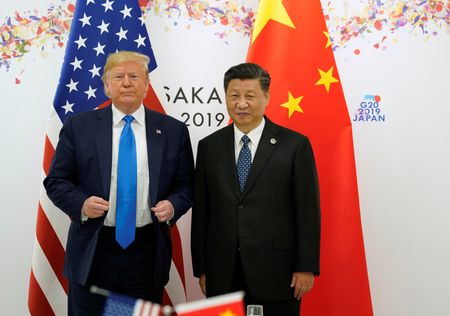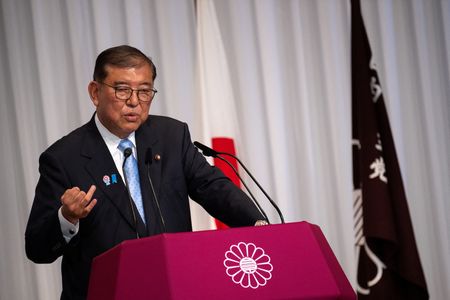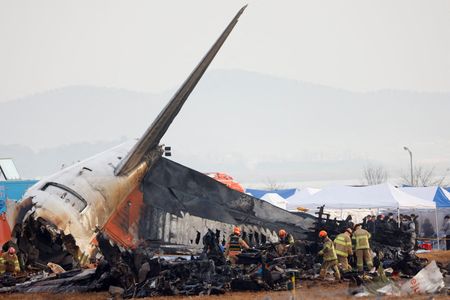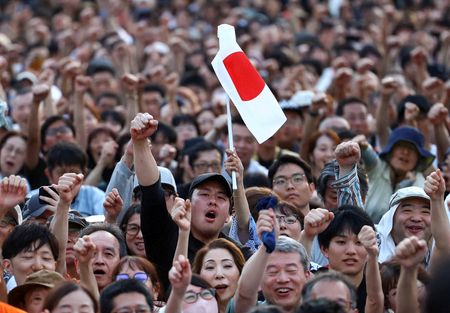By Trevor Hunnicutt
WASHINGTON/BEIJING (Reuters) -Aides to Donald Trump and Chinese leader Xi Jinping have discussed a potential meeting between the leaders during a trip by the U.S. president to Asia later this year, according to two people familiar with the plans.
While plans for a meeting have not been finalized, discussions on both sides of the Pacific have included a possible Trump stopover around the time of the Asia-Pacific Economic Cooperation summit in South Korea or talks on the sidelines of the October 30-November 1 event, the people said.
Trump has sought to lower tensions with Beijing in recent weeks after pausing a tit-for-tat tariff war that has upended global trade and supply chains.
China has also sought the attendance of international guests, including some from the United States, for a September 3 Beijing ceremony commemorating the 80th anniversary of the end of World War Two, said a spokesperson for China’s embassy in Washington in a briefing last week for reporters.
The Kremlin said on Monday it did not rule out the possibility of Russian President Vladimir Putin and Trump meeting in Beijing in September if Trump decides to attend that ceremony. Putin has confirmed his attendance.
“Diplomacy between heads of state plays an irreplaceable strategic leading role in Sino-U.S. relations,” said Chinese Foreign Affairs Ministry spokesperson Guo Jiakun on Monday, declining to comment on a possible Trump-Xi meeting.
The White House declined to comment.
U.S. Treasury Secretary Scott Bessent said on Monday there would be “talks in the very near future” between the countries.
“Trade is in a good place, and I think now we can start talking about other things. The Chinese, unfortunately … are very large purchasers of sanctioned Iranian oil, sanctioned Russian oil,” he told CNBC.
He added: “We could also discuss the elephant in the room, which is this great rebalancing that the Chinese need to do.”
Trump has sought to impose tariffs on virtually all foreign goods, which he says will stimulate domestic manufacturing and which critics say will make many consumer goods more expensive for Americans.
He has called for a universal base tariff rate of 10% on goods imported from all countries, with higher rates for imports from some, including China. Imports from China have the highest tariff rate of 55%.
Trump has set a deadline of August 12 for the U.S. and China to reach a durable tariff agreement.
Other points of friction between the countries include China’s support for Russia, trade in fentanyl-related chemicals, regional security worries, and exit bans on some American residents.
The most recent high-level U.S.-China meeting was on July 11, when U.S. Secretary of State Marco Rubio and Chinese Foreign Minister Wang Yi had what both described as a productive and positive meeting in Malaysia about how trade negotiations should proceed.
Rubio said then that Trump had been invited to China to meet with Xi, and said that both leaders “want it to happen.”
On Friday, China Commerce Minister Wang Wentao said China wants to bring its trade ties with the U.S. back to a stable footing and that recent talks in Europe showed there was no need for a tariff war.
(Reporting by Trevor Hunnicutt in Washington; Additional reporting by Liz Lee, David Brunnstrom, Daphne Psaledakis, Andrea Shalal, Susan Heavey, Urvi Dugar and Nandita Bose; Editing by Chizu Nomiyama, Nia Williams, Don Durfee, Rod Nickel)








